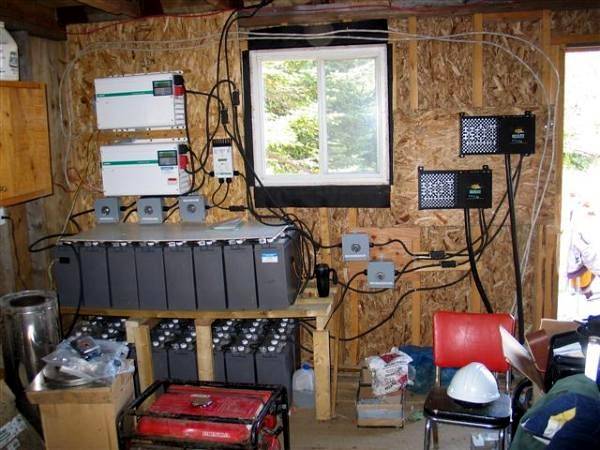stonergirl
New member
I read these posts and I am still confused. I have a 5" vortex fan that I'd like to slow down due to the noise. What type of controller would be safe and not have the hum??
I read these posts and I am still confused. I have a 5" vortex fan that I'd like to slow down due to the noise. What type of controller would be safe and not have the hum??
WTF???????????????
"Mr.My Grow is @ "The Off-Grid Place"
U have ALL this running on 2 wind turbines & some Car Batteries?
I sure would like to see a Pic?
Of this Battery Bank?
............O and wait U told me U R and "Electrical Engineer" by trade?
So Y don't U just make what U need?

The jet engine analogy is pretty close. Unless someone has a great quick fix to muffle the sound of rushing air without cutting performance too much I am all ears, well eyes anyway.
Go back to your donkey, that was then this is now. Try staying off your Mommy and Daddies putter before they beat you again. Only children have sig lines like yours.
I could put one together, but why bother when it is cheaper to buy it off the shelf? Makes no sense what-so-ever to spend anymore than needed.
And you wanting to know the address where this is located, get a life!
I read these posts and I am still confused. I have a 5" vortex fan that I'd like to slow down due to the noise. What type of controller would be safe and not have the hum??
Ya really need to STOP posin...
that is not yours and U know it..
Where did the trees come from we can all see thru the window?


So sorry you are not able to see to the left of the second white building. Get back to your donkey, he misses you.
You know you have people jealous when you have your very own troll, or they are a cop looking for directions.
I MUST reiterate my reply in your original thread: You are going to cause grow-room fires eventually in someone's grow-room by supplying this PATENTLY FALSE INFORMATION
ANY electrical device requires the proper WATTAGE to do the operation it was designed to do. Wattage= Volts x Amps
By using a Variac to reduce the voltage that the fan motor "sees" the fan will pull MORE current to provide the same WATTAGE.
The problem inherent in doing so: these fans were designed to operate at 120Vac, usually at some menial current (0.68Amp for my Fantech FX6").
Reducing the voltage can increase the current draw to the point that the motor windings OVERHEAT, thereby causing the potential for a FIRE...
Also, the problem with reducing voltage and NOT varying the supply FREQUENCY is there is an inherent LOSS OF TORQUE; IE: you are OVERLOADING THE MOTOR. which increases SLIP of the motor. When you increase Slip, the motor will continue to pull more and more current to provide the necessary torque. The motor current will continue to increase until the motor, OR Variac windings (like in your original thread) BURN OUT creating a Short Circuit.
The Diac fired Triac controls are the proper way to control these fan's speed, it even states on my Fantechs that I should use KB Electronics Part # KBWC-15K Which is a Solid-State Traic based speed control.
References:
From: http://www.ehow.com/how_5114264_use-variac.html
A variac is not a motor speed control; don't attempt to use it on an AC motor. Most variacs, at the maximum knob setting, will output over 120 volts. Use caution when making adjustments; high voltages can damage equipment. Some older variacs lack a grounded outlet. Use caution when plugging equipment into these.
From: http://www.eng-tips.com/viewthread.cfm?qid=200189&page=48
Sigh... Oh well...
Speed of an AC motor is ALWAYS determined by the supply frequency and the number of poles in the motor winding.
Changing the voltage without changing the frequency reduces the TORQUE of an AC motor by the square of the voltage. So for instance at 60% voltage, the torque is .6 x .6 = 36% of the normal torque. If you have a fixed load, the speed reduces because the motor now has insufficient torque to keep it spinning at full speed. DEPENDING ON THE MOTOR DESIGN, that may or may not work out too well, because MOST AC motors will try to keep running the same speed and pull more current to do it, until the motor burns up.
A variac or rheostat (a.k.a. dimmer) can change the speed on SOME TYPES of motors because they have a type of design that inherently limits the current flow, thus allowing the lower torque output to occur without burning themselves up. These are called Shaded Pole motors and most likely your fan is one of these if it hasn't burned up from your test. Another type is a "Universal Motor" which is really more of a DC motor to which you supply AC. This is what you find in small appliances and portable tools, not likely on a fan.
A VFD changes the voltage AND frequency together at a predetermined ratio, which allows the motor to maintain a constant torque while varying the speed by keeping the ratio the same as it was at full speed and full voltage. But it does so by converting the AC to DC, then using high speed transistors to fire DC pulses in what is called a PWM pattern to the motor to recreate a "pseudo sine wave" that the motor reacts to AS IF it were AC. This works great on 3 phase motors. The problem with most types of single phase motors is that the pulsed DC is incompatible with the design of the motors, and you can damage the motor, the VFD or both. Usually both.
From: http://isefaq.com/ActiveKB/questions.php?questionid=2
Can I vary the speed of my motor with a variable transformer?
Many motors can use a variable transformer for speed control.
Motors that usually can be controlled by varying the motor voltage:
Universal Motors
Series Wound Motors
Torque Motors
Shaded Pole Motors
Motors that sometimes cannot be varied by changing the motor voltage:
Split Phase Motors
Permanent Split Capacitor Motors (Imnotcrazy's added NOTE: 99% of inline fans are of the Permanent Split Capacitor type)
Repulsion Induction Motors
Motors with centrifugal switches
Motors with fan cooling can sometimes be damaged due to the decreased cooling effect at lower speeds (depending on load).
I MUST reiterate my reply in your original thread: You are going to cause grow-room fires eventually in someone's grow-room by supplying this PATENTLY FALSE INFORMATION
ANY electrical device requires the proper WATTAGE to do the operation it was designed to do. Wattage= Volts x Amps
By using a Variac to reduce the voltage that the fan motor "sees" the fan will pull MORE current to provide the same WATTAGE.
The problem inherent in doing so: these fans were designed to operate at 120Vac, usually at some menial current (0.68Amp for my Fantech FX6").
Reducing the voltage can increase the current draw to the point that the motor windings OVERHEAT, thereby causing the potential for a FIRE...
Also, the problem with reducing voltage and NOT varying the supply FREQUENCY is there is an inherent LOSS OF TORQUE; IE: you are OVERLOADING THE MOTOR. which increases SLIP of the motor. When you increase Slip, the motor will continue to pull more and more current to provide the necessary torque. The motor current will continue to increase until the motor, OR Variac windings (like in your original thread) BURN OUT creating a Short Circuit.
The Diac fired Triac controls are the proper way to control these fan's speed, it even states on my Fantechs that I should use KB Electronics Part # KBWC-15K Which is a Solid-State Traic based speed control.
References:
From: http://www.ehow.com/how_5114264_use-variac.html
A variac is not a motor speed control; don't attempt to use it on an AC motor. Most variacs, at the maximum knob setting, will output over 120 volts. Use caution when making adjustments; high voltages can damage equipment. Some older variacs lack a grounded outlet. Use caution when plugging equipment into these.
From: http://www.eng-tips.com/viewthread.cfm?qid=200189&page=48
Sigh... Oh well...
Speed of an AC motor is ALWAYS determined by the supply frequency and the number of poles in the motor winding.
Changing the voltage without changing the frequency reduces the TORQUE of an AC motor by the square of the voltage. So for instance at 60% voltage, the torque is .6 x .6 = 36% of the normal torque. If you have a fixed load, the speed reduces because the motor now has insufficient torque to keep it spinning at full speed. DEPENDING ON THE MOTOR DESIGN, that may or may not work out too well, because MOST AC motors will try to keep running the same speed and pull more current to do it, until the motor burns up.
A variac or rheostat (a.k.a. dimmer) can change the speed on SOME TYPES of motors because they have a type of design that inherently limits the current flow, thus allowing the lower torque output to occur without burning themselves up. These are called Shaded Pole motors and most likely your fan is one of these if it hasn't burned up from your test. Another type is a "Universal Motor" which is really more of a DC motor to which you supply AC. This is what you find in small appliances and portable tools, not likely on a fan.
A VFD changes the voltage AND frequency together at a predetermined ratio, which allows the motor to maintain a constant torque while varying the speed by keeping the ratio the same as it was at full speed and full voltage. But it does so by converting the AC to DC, then using high speed transistors to fire DC pulses in what is called a PWM pattern to the motor to recreate a "pseudo sine wave" that the motor reacts to AS IF it were AC. This works great on 3 phase motors. The problem with most types of single phase motors is that the pulsed DC is incompatible with the design of the motors, and you can damage the motor, the VFD or both. Usually both.
From: http://isefaq.com/ActiveKB/questions.php?questionid=2
Can I vary the speed of my motor with a variable transformer?
Many motors can use a variable transformer for speed control.
Motors that usually can be controlled by varying the motor voltage:
Universal Motors
Series Wound Motors
Torque Motors
Shaded Pole Motors
Motors that sometimes cannot be varied by changing the motor voltage:
Split Phase Motors
Permanent Split Capacitor Motors (Imnotcrazy's added NOTE: 99% of inline fans are of the Permanent Split Capacitor type)
Repulsion Induction Motors
Motors with centrifugal switches
Motors with fan cooling can sometimes be damaged due to the decreased cooling effect at lower speeds (depending on load).